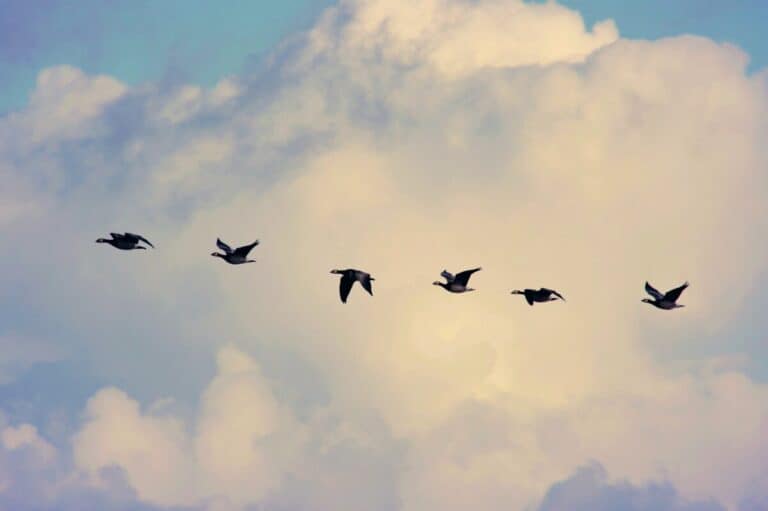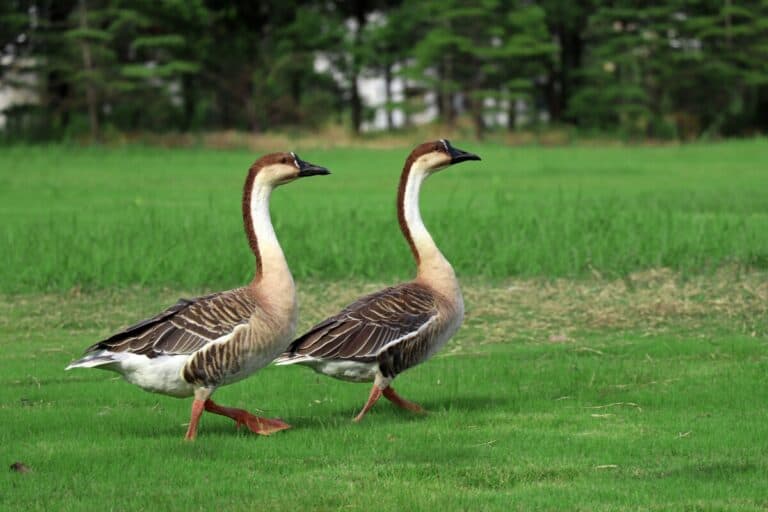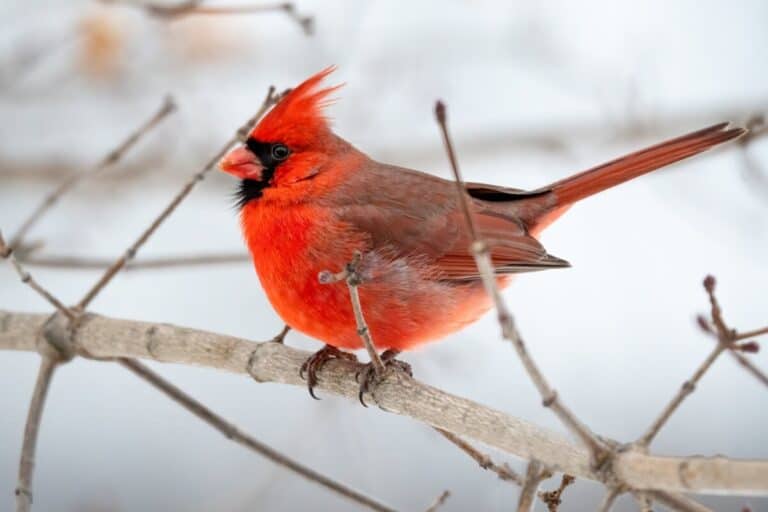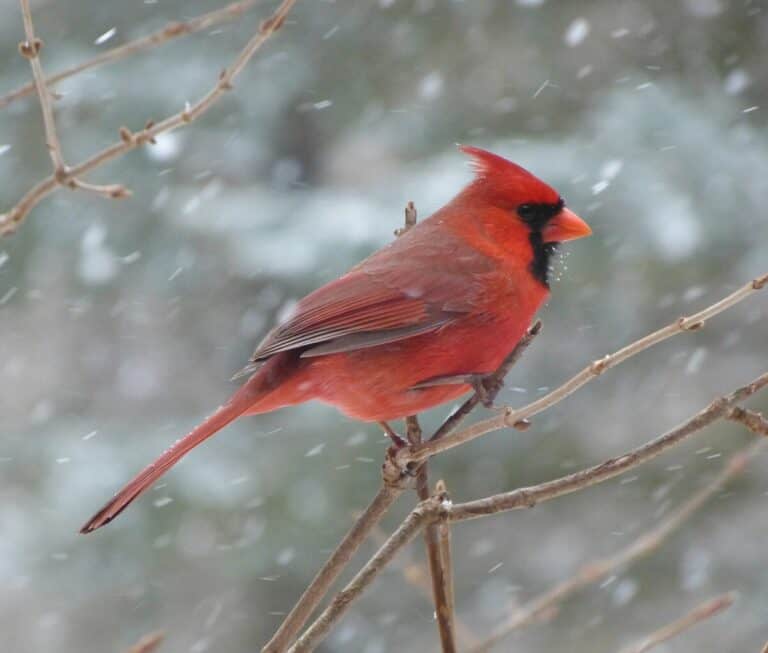Why Are Birds So Jerky? [ANSWERED!]
We’re reader-supported; we may earn a commission from links in this article.
I somehow always observe birds move around REALLY twitchily and abruptly. And I’ve always wondered this: “why are birds so jerky?”. So I did my own online research and I found an answer. Here’s what I found:
Birds’ movements are so jerky because they use mostly head movement, but minimal eye movement to switch their gazes between objects rapidly and achieve depth perception. Birds’ rapid head movements are possible due to traits such as light heads, very flexible necks, and a very high metabolic rate.
So now you know why these birds are so twitchy! BUT, there’s a full explanation behind the summarized answer I wrote above.
Read on more to find out more about it!
Why Are Birds So Jerky? – EXPLAINED!
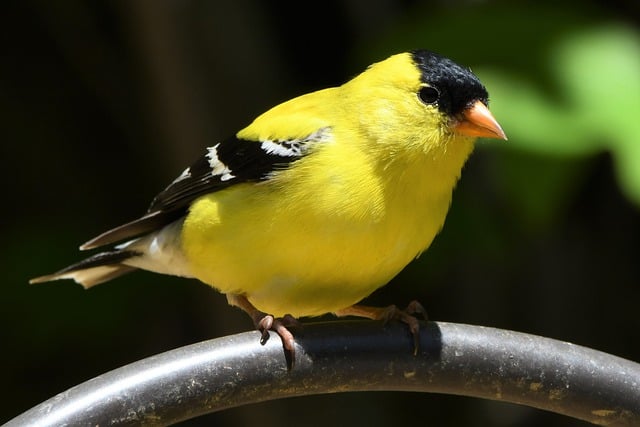
You might have noticed how birds move around so jerkily and how they are so incredibly twitchy. There’s actually a great explanation for this! Most birds have their eyes placed on either side of their heads.
This results in a very wide field of view, and it helps them to scan for any predators or prey in their surroundings.
However, as their eyes are on the sides rather than being in front, they have poor binocular vision. This lack of binocular vision takes away the depth perception in birds. So they need to adapt.
Here, I’ll cover 3 main reasons why they are so jerky:
1. Birds Need To Change Gazes
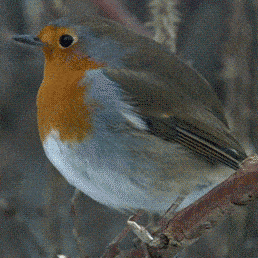
Both birds and humans actually share the same mechanisms to change gazes.
When humans and birds look at an object to the side, we have to move our heads and our eyes to fix our gaze on it.
The only difference between humans and birds is this: birds make use of their HEAD movements more, but we humans make use of eye movements more to fix our gazes! So we’re not actually all that different! [1]
Simply put, birds can’t look around with their eyeballs much, so they have to compensate with more head movement!
In other words, birds have to keep moving their heads to lock on to objects that they want to observe. To illustrate how this works, imagine how your eyes would look like if you were driving. They would dart all over the place, right?
In the mind of a bird, they would be darting their head about to compensate for their minimal eye movement by moving their entire head! (Not that birds would ever drive cars!)

Scientists studied this in detail combination of head and eye movement in birds in a peahen. They observed how in the graphs shown above where birds use mostly head movements to make their gaze change.
In graph a, the peahen took a larger angle of a turn toward an object, whereas in graph b the peahen took a smaller angle of a turn toward an object.
This also means that birds jerk their heads more to make larger turns than smaller turns! [1]
2. Birds Need To Perceive Depth
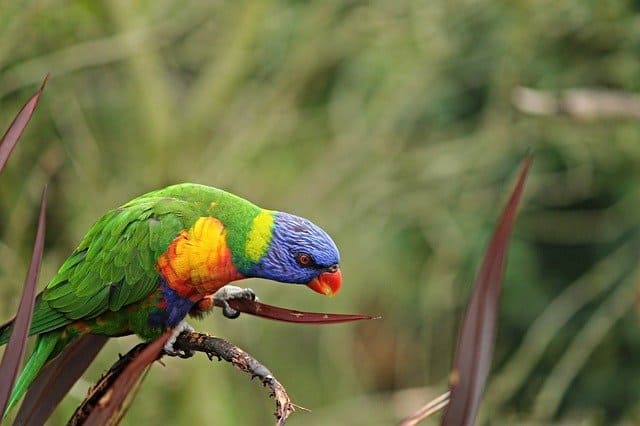
Birds have eyes on both sides of their head. This causes them to sacrifice their depth perception for a very wide field of view, to help them locate any predators or preys in their surroundings.
With their poor depth perception, birds make up for it by moving necks rapidly in the direction they want to observe. Their brain then processes this information to enable them to perceive depth! Cool right?
3. Birds Need To Switch Between Lateral And Frontal Viewing

When birds are out and about, they need to be incredibly aware of their surroundings, whether this is of prey or predators.
Scientists have also discovered that birds twitch their heads in order to switch between different lateral viewing and frontal viewing. You may ask, how are the two any different?

The lateral vision of birds is detected by the central fovea, located at the center of the back of the eye, which receives visual input from the birds’ sides.
However, in 54% of all birds, there is a second temporal fovea that sits at the back of the eye and receives visual input directly in front of birds. [3]
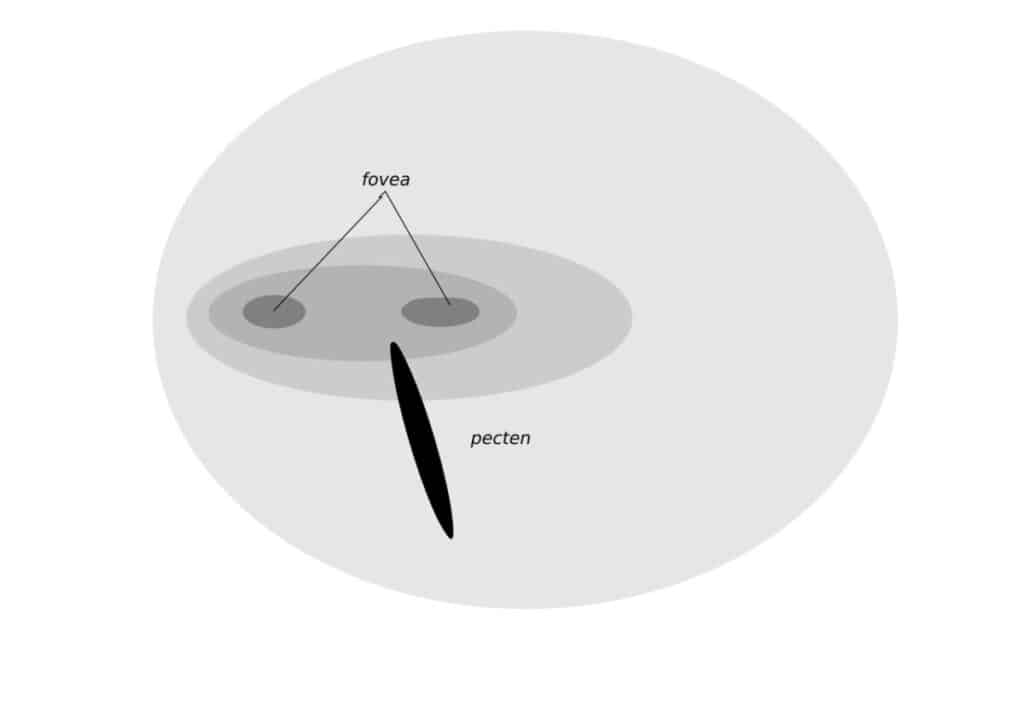
What are foveae (plural for fovea)? Foveae are spots on the back of the eye where light is focused on for an image to be interpreted. Some bird species have 2, but some only have one fovea. [4]
| Broad Bird Groups | Number of Foveae |
| Raptors | 2 |
| Opportunists | 1 |
| Scavengers | 1 |
| Nocturnal Birds | 1 |
| Pigeon | 1 |
| Seabirds | 1 |
| Hummingbirds | 2 |
Here’s a YouTube video so you can visualize how a robin can look like while switching between lateral and frontal vision.
It’s in slow-motion so you can observe how fast they move and the degree their heads turn:
Lateral and frontal viewing have different purposes in a bird’s vision. Experts have managed to gather evidence that when pigeons view objects laterally, they are 3x more sensitive to motion than when viewed frontally!
This research is still ongoing among scientists, but the fovea centralis in their eyes, which is responsible for lateral vision, may be solely responsible for detecting fast motion in birds. [2]
Another reason why birds need to constantly switch between lateral and frontal vision is that birds tended to view distant objects laterally, but objects that were less than 30cm away frontally. [2]
Here’s what this means: depending on the distance of the object from the bird, they may need to constantly switch between the two by twitching their head to keep tabs on a juicy berry in front of them or potential predators nearby.
How Do Birds Move So Jerkily?
Now that we’ve finally satisfied your burning question, another one may pop into your head. HOW do birds actually move so jerkily? It’s nice to know why they do it, but what actually enables them to do it.
Here are some points for the answer:
1. Birds Have Light Heads
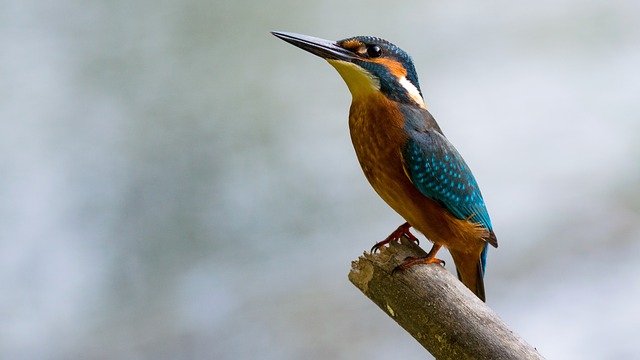
Firstly, birds need to have a relatively light head so that it will be easy for them to swing around and snap to an object they want to focus on. With big and heavy heads like ours, it’s unlikely that we can even match how birds’ heads can snap to a target almost every 2 seconds!
If birds did not have light heads, they would not be able to take the constant centrifugal force and giddiness induced by the simple activity of checking their surroundings! Thankfully, they do not.
2. Birds Have Very Flexible Necks
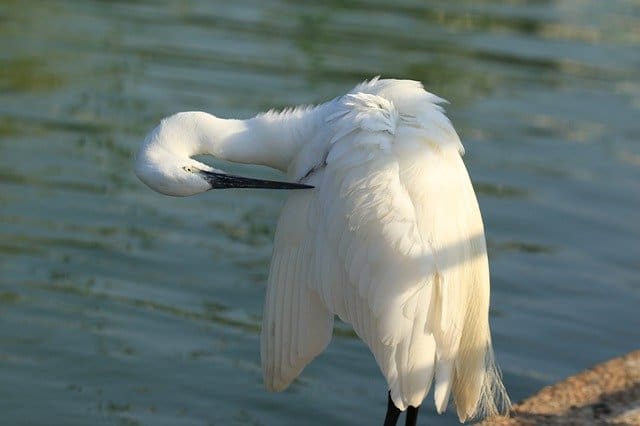
Secondly, in order to jerk their heads quickly at a wide range, birds need to have very flexible necks.
Birds’ flexible necks allow for them to change their gaze more productively while relying less on their eyes to center their sight on objects. Birds have more vertebrae and muscles on their neck for extra flexibility and control!
Here’s a video of a bird with a VERY flexible neck:
3. Birds Have Very High Metabolic Rates
Lastly, we all now know that birds need to look around quickly so they are twitchy; but what actually drives that SUPER twitchy nature?
Here’s the answer: birds have higher metabolic rates than other animals. In fact, they even maintain a higher body temperature than mammals (99.9 – 110.3 F).
High metabolic rates enable birds to move more quickly and drive that twitchy nature in them. It also helps them to perform high-energy consuming activities such as flight, incubation, and foraging constantly!
Here’s a video of how this all works if you’re still confused at this point!
Why Do Birds Move Their Heads Very Often?
Birds move their heads very often to help them switch gazes between objects, perceive depth, and switch between lateral and frontal viewing. These enable birds to compensate for the minimal eye movement they have while observing their surroundings.
Can Birds Move Their Eyes?
Birds can move their eyes. However, eye movement in birds is minimal compared to head movement when they are switching their gazes of objects around them. Birds move less of their eyes when a larger turn angle is required, but them more when a smaller turn angle is required.
Here’s a simple graph to explain this:

In an experiment done by scientists on peahens in the figure above, graph a shows less eye movement usage at a larger angle, whereas graph b shows more eye movement usage at a smaller angle.
The angle represents the angle from the bird to the object.
Why Do Birds Constantly Look Around?
Birds constantly look around because they need to switch gazes, to achieve depth perception, and to switch between lateral and frontal vision. By looking around rapidly, birds are able to focus well on the objects around them and respond and interact with the environment around them.
Final Thoughts
Well, this article was definitely a fascinating one! I was always wondering about how birds are so damn twitchy all the time.
I’m glad I got to satisfy my own curiosity through this article and I sure hope that you’ve also had your curiosity satisfied. Thanks for reading and all the best. Happy birding!
References
- Land, M.. (2014). Eye movements of vertebrates and their relation to eye form and function. Journal of comparative physiology. A, Neuroethology, sensory, neural, and behavioral physiology. 201. https://doi.org/10.1007/s00359-014-0964-5
- Dawkins, M. S. (2002, June 21). What are birds looking at? Head movements and eye use in chickens. Animal Behaviour. https://doi.org/10.1006/anbe.2002.1999
- Avian Physiology. (1986). https://doi.org/10.1007/978-1-4612-4862-0
- Potier, S. (2020). Visual Adaptations in Predatory and Scavenging Diurnal Raptors. Diversity, 12(10), 400. MDPI AG. Retrieved from http://dx.doi.org/10.3390/d12100400
My Recommended Birding Resources:
Hey there, Justin here!
Here’s a list of all my favorite resources, products, and brands I trust and love.
My Celestron Nature DX 8×42 Binoculars: It’s a great budget pair for beginner birders. Highly valued for its price! Read my review.
Safe Paint for Bird Baths Guide: Learn about non-toxic paint for painting bird baths.
Safe Sealers for Bird Baths Guide: Learn which sealers are safe for bird baths.
Safe Paint for Bird Feeders Guide: Learn what special care needs to be taken to paint bird feeders with the right paint.
Safe Paint for Birdhouses Guide: Learn about non-toxic paint for painting birdhouses. (Not the same as bird baths!)
Bird Identification Apps Guide: 2 of my favorite birding apps are Merlin Bird ID, and eBird Mobile! Merlin is great for tracking and identifying birds, and eBird Mobile is great for tracking the birds sighted when birding.
Check out my resources page for the full list of resources I recommend!

Justin Chia
Justin is the founder and author of Birding Outdoors. He is a Nanyang Technological University (NTU) alumnus with a Bachelor of Biological Sciences and a former data analyst.
Now, Justin runs the Birding Outdoors blog full-time, hoping to share his deep love for birds, birding, and nature with others.
To unwind, Justin enjoys gaming and reading.

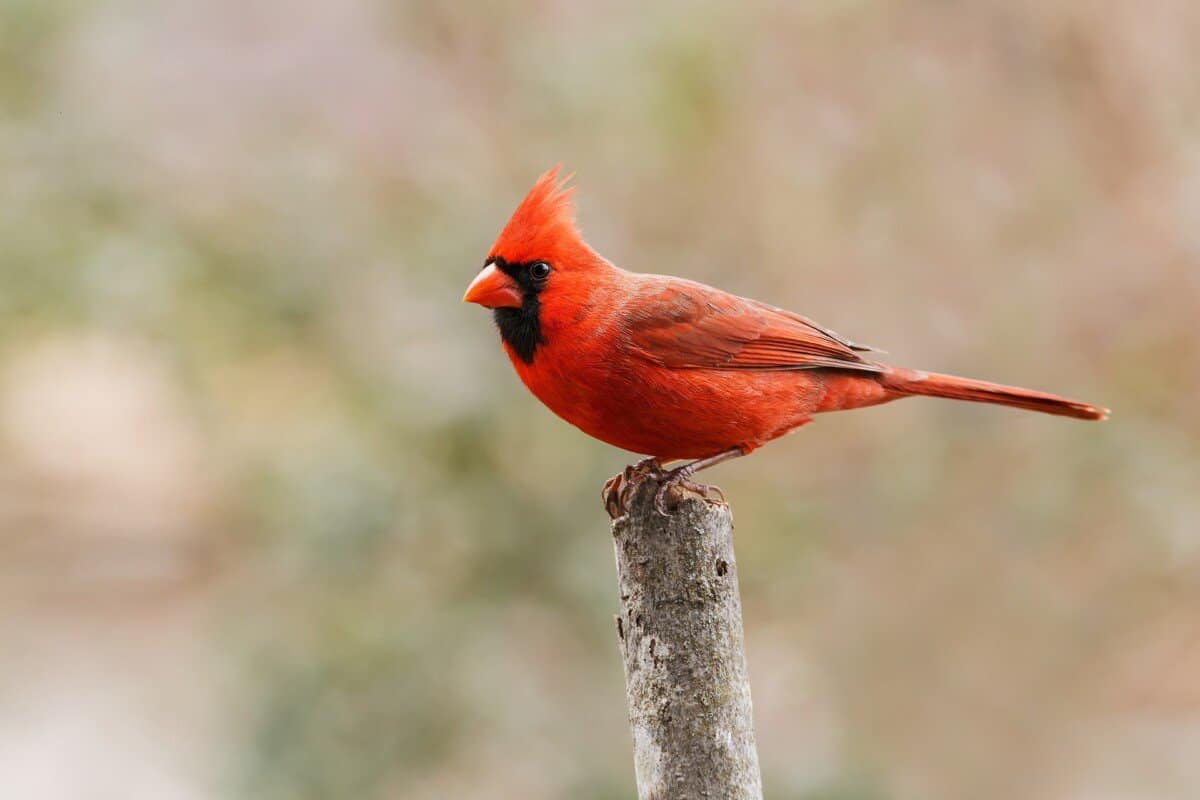
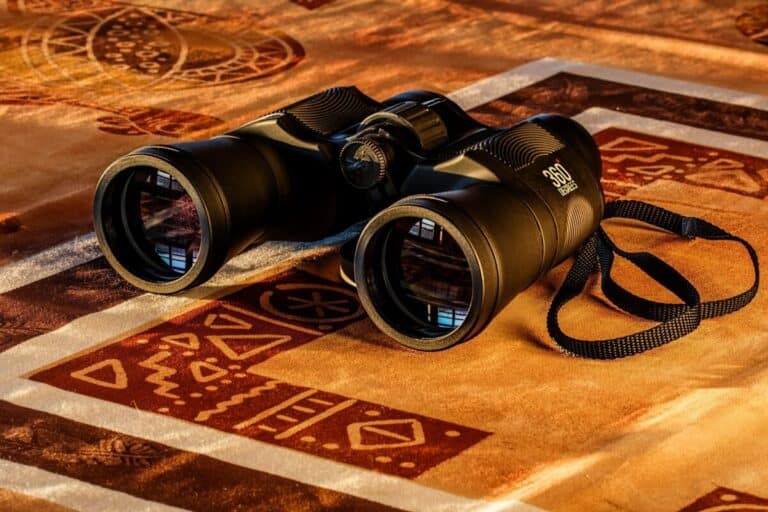
![How Does Rain Affect Birding? [ANSWERED! + Advice]](https://birdingoutdoors.com/wp-content/uploads/2021/02/falcon-5305059_1920-768x512.jpg)
